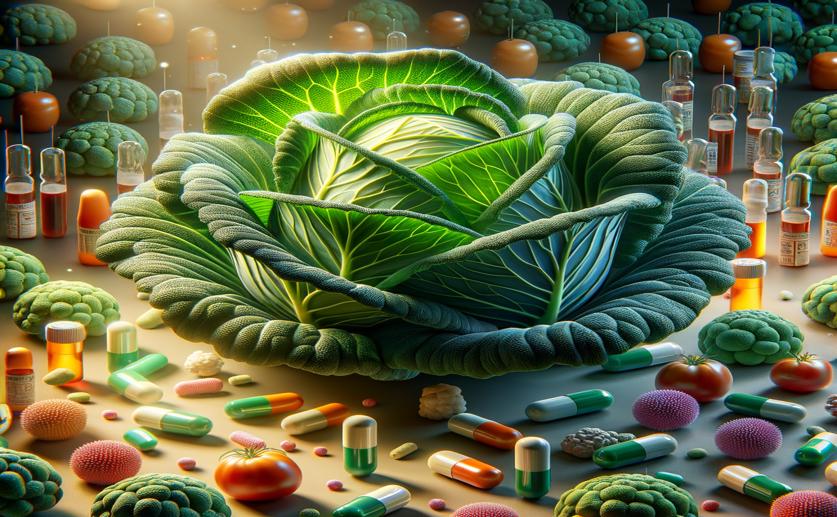
How Cabbage Family Plants Stop Harmful Bacteria Enzymes
Jenn Hoskins
21st April, 2024

Image Source: Natural Science News, 2024
Key Findings
- In a Cairo University study, compounds in Brassica veggies like cabbage showed potential to fight the tough bacterium Acinetobacter baumannii
- These vegetables contain metabolites that can inhibit bacterial growth and the activity of harmful enzymes, reducing infection severity
- Specific metabolites in these plants were identified as effective against the bacterium, comparable to known lipase inhibitors used in treatments
VegetablesBiochemPlant Science
References
Main Study
1) Evidence on the inhibitory effect of Brassica plants against Acinetobacter baumannii lipases: phytochemical analysis, in vitro, and molecular docking studies.
Published 19th April, 2024
https://doi.org/10.1186/s12906-024-04460-y
Related Studies
2) Glucosinolates: Molecular structure, breakdown, genetic, bioavailability, properties and healthy and adverse effects.
3) The antimicrobial effects of glucosinolates and their respective enzymatic hydrolysis products on bacteria isolated from the human intestinal tract.
4) Profiling polyphenols in five Brassica species microgreens by UHPLC-PDA-ESI/HRMS(n.).
5) Antibacterial activity and mode of action of selected glucosinolate hydrolysis products against bacterial pathogens.



 29th February, 2024 | Jenn Hoskins
29th February, 2024 | Jenn Hoskins